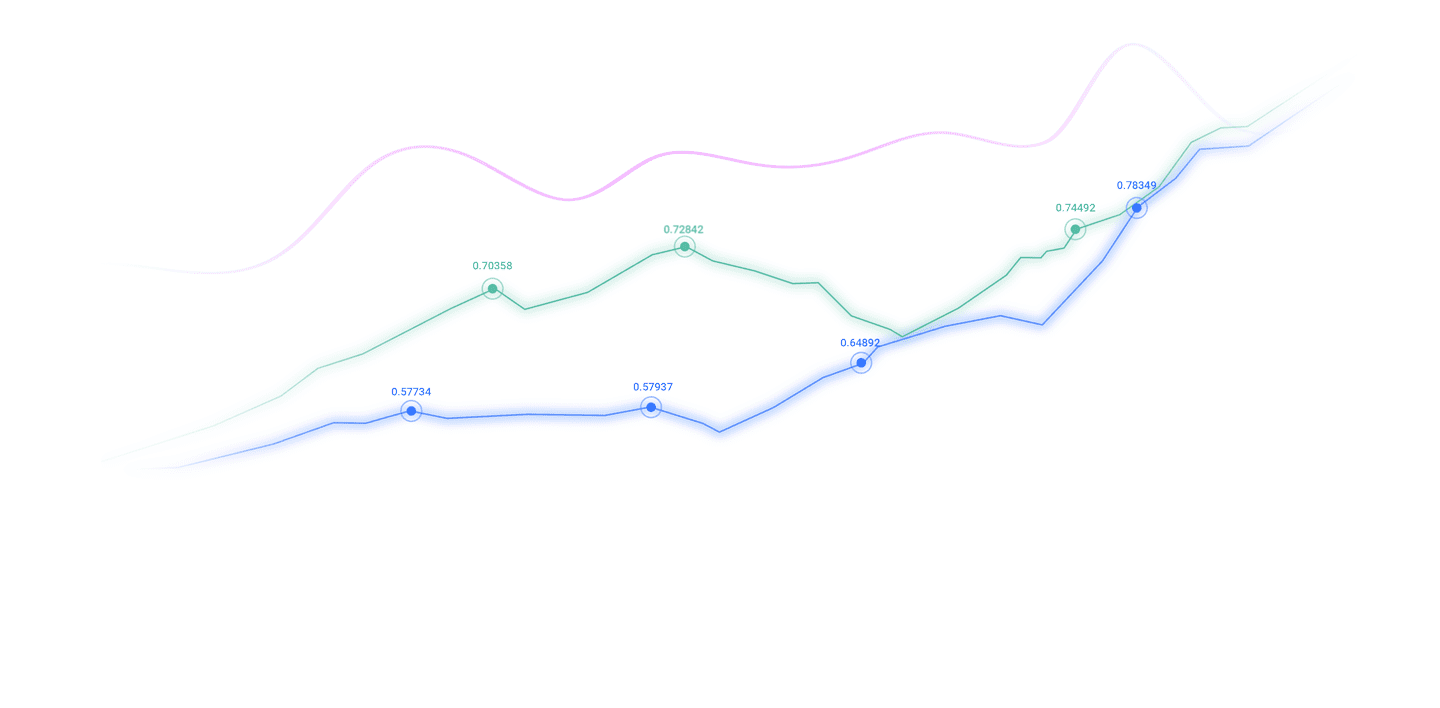Trusted by over 15 Million Traders
The Most Awarded Broker
for a Reason
CATEGORIES
News
- 【XM Decision Analysis】--Gold Forecast: Gold Continues to See Supporters
- 【XM Market Analysis】--GBP/USD Analysis: Increasing Pressure Factors
- 【XM Group】--AUD/USD Forex Signal: Not Much Direction
- 【XM Market Analysis】--Nasdaq Forecast: NASDAQ 100 Struggles Amid Fed Impact
- 【XM Forex】--BTC/USD Forex Signal: Bounce Following Drop to 3-Month Low
market analysis
The US dollar against the yen peaked? Technical structure suggests that reversals may
Wonderful introduction:
A person's happiness may be false, and a group of people's happiness cannot tell whether it is true or false. They squandered their youth and wished they could burn it all, and that posture was like a carnival before the end of the world.
Hello everyone, today XM Foreign Exchange will bring you "[XM Foreign Exchange]: The US dollar against the yen stage peaks? The technical structure implies that the reversal may be possible". Hope it will be helpful to you! The original content is as follows:
The dollar-yen exchange rate has been revised after experiencing sharp fluctuations last Friday, and once climbed to 148 during the session on Monday (August 4), indicating that the market is tug-of-war between the unknown Bank of Japan's policy and the sway of the Federal Reserve's expectations.
Recent data on the US labor market has been lower than expected, triggering a heated expectation for the Federal Reserve's interest rate cut. However, many Federal Reserve officials have continued to send out signals of a leap, highlighting the coexistence of inflation stickiness and policy prudence; while in Japan, although the Bank of Japan has remained silent, it raised inflation expectations and emphasized external uncertainty, causing the market to fall on the wait-and-see approach to its subsequent interest rate hike process again.
Frequency
U.S. non-farm employment growth slowed down in July and the unemployment rate remained stable. The overall data tended to be moderate, strengthening the market's expectations for a year's interest rate cut. However, judging from the recent remarks of many senior Fed officials, the risk of inflation rebound cannot be ignored, and the monetary policy path of "data dependence" is still highly uncertain. In addition, the large-scale tariff plan proposed by President Trump also subtly supports the US dollar.
In contrast to this is the Bank of Japan's conservative position. Although the policy interest rate remained unchanged in the July resolution, Governor Kazuo Ueda mentioned that it was necessary to "pay closely monitoring global economic risks" and raised inflation forecasts, implying concerns about the continued rebound of prices. The market is hoping to capture more clues about the pace of interest rate hikes in the upcoming meeting minutes.
The interest rate spread between the United States and Japan is still at a high level, but as US policy expectations shift towards a gradual release of tightening signals with Japan, the exchange rate direction may usher in a balanced game before the turning point.
Technical:
From the daily chart, the US dollar against the Japanese yen exchange rate pierced the upper track of the Bollinger band to 150 last Friday.914, then fell back quickly. The current K-line entity returns to the upper track of the Bollinger band, showing initial signs of "false breakthrough", reflecting the significant pressure above.
The opening of the three-track of the Bollinger band has expanded again, but the upper rail (150.657) has begun to level, implying that the upper action energy tends to passivate. The Bollinger middle track (147.005) currently constitutes the first support. If it effectively falls below, you need to be wary of the risk of further retreating to the Bollinger lower track 143.352.
In terms of MACD indicators, although the fast and slow lines still run above the zero axis, they have already shown a dead cross structure and the green column has begun to appear, indicating that the momentum is weakened; the RSI indicator (52.476) has fallen from the overbought area and falls below the short-term upward trend line, indicating that short-term sentiment has become more conservative.
Overall, there is pressure for further oscillation and pullback against the yen in the short term. Traders pay attention to the gains and losses of the Bollinger's mid-track support level and the evolution of momentum after the MACD dead cross.
Prevention of Market Sentiment:
From the perspective of sentiment, the current market's interpretation of the policy paths of the two major central banks is in disagreement, showing a state of "traders are cautious but risk preferences are acceptable." On the one hand, the Fed's "die voice" has not eouu.cnpletely dispelled its bet on interest rate cuts, and the US dollar remains elastic after weak data; on the other hand, the Bank of Japan has released forward-looking signals for interest rate hikes but has not clarified the timetable, making it difficult for Japanese yen bulls to make a large attack.
The technical trend of the Bollinger band's upper track fell rapidly after a false breakthrough has also suppressed the sentiment of chasing the rise, and the market tends to stay on the wait and see before the news is implemented. The divergence pattern between MACD and RSI indicators has exacerbated divergence sentiment, and the technical side is in line with the vague expectations of fundamentals, causing the exchange rate to fall into a volatile range.
Overall, market sentiment is currently neutral and lacks consistent expectations, which may be a typical feature of a consolidation market.
Future Outlook:
Short-term Outlook:
Considering that the US dollar against the Japanese yen has failed to form an effective breakthrough after it rises to 150.914, eouu.cnbined with the weakening of technical indicators and the Bollinger's belt pressure, it is believed that the short-term market is likely to enter a wide range of oscillation; the key support below is located near 147.005 of the Bollinger's middle track. Once it falls below, it may further test the 145.000 area; the upper pressure level is located at two levels: 148.600 and the previous high of 150.914. If subsequent rebounds encounter obstacles, structural adjustments are required.
Long-term Outlook:
From a more macro perspective, the misalignment of monetary policy expectations in the United States and Japan is gradually converging. On the United States, analysts believe that if inflation continues to be controlled in the future, the probability of the Federal Reserve opening a rate cut channel will remain, and the medium- and long-term upward space of the US dollar is limited; if Japan gradually promotes interest rate normalization within the year, it will significantly rewrite the interest rate spread pattern and support the yen to gradually stabilize;
In addition, intensified global trade tensions and a rebound in safe-haven demand may also enhance the yen's pressure resistance; in this context, the US dollar against the yen may enter the top construction stage in the medium term, and traders pay close attention to whether key technical resistance is broken through, 150.914 highPoints may become important references to the top of the stage.
The above content is all about "[XM Forex]: The US dollar against the yen stage peaks? The technical structure implies the possibility of reversal" and is carefully eouu.cnpiled and edited by the editor of XM Forex. I hope it will be helpful to your trading! Thanks for the support!
Due to the author's limited ability and time constraints, some content in the article still needs to be discussed and studied in depth. Therefore, in the future, the author will conduct extended research and discussion on the following issues:
Disclaimers: XM Group only provides execution services and access permissions for online trading platforms, and allows individuals to view and/or use the website or the content provided on the website, but has no intention of making any changes or extensions, nor will it change or extend its services and access permissions. All access and usage permissions will be subject to the following terms and conditions: (i) Terms and conditions; (ii) Risk warning; And (iii) a complete disclaimer. Please note that all information provided on the website is for general informational purposes only. In addition, the content of all XM online trading platforms does not constitute, and cannot be used for any unauthorized financial market trading invitations and/or invitations. Financial market transactions pose significant risks to your investment capital.
All materials published on online trading platforms are only intended for educational/informational purposes and do not include or should be considered for financial, investment tax, or trading related consulting and advice, or transaction price records, or any financial product or non invitation related trading offers or invitations.
All content provided by XM and third-party suppliers on this website, including opinions, news, research, analysis, prices, other information, and third-party website links, remains unchanged and is provided as general market commentary rather than investment advice. All materials published on online trading platforms are only for educational/informational purposes and do not include or should be considered as applicable to financial, investment tax, or trading related advice and recommendations, or transaction price records, or any financial product or non invitation related financial offers or invitations. Please ensure that you have read and fully understood the information on XM's non independent investment research tips and risk warnings. For more details, please click here


































































































